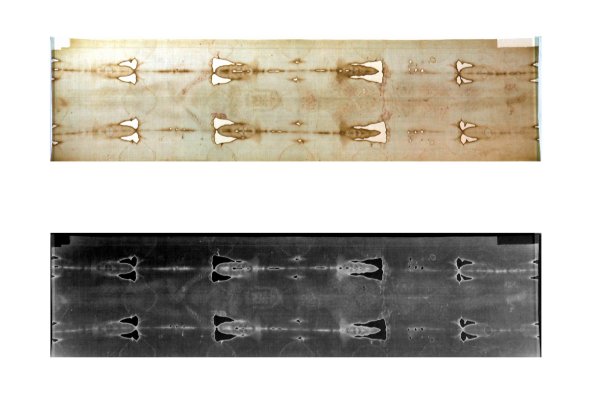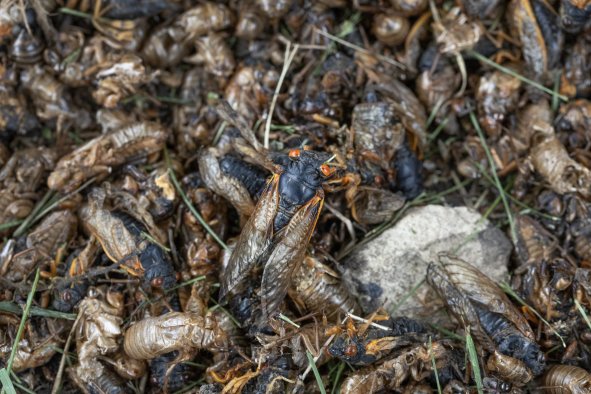An invasive caterpillar species is posing a serious threat to a cherished native moth, even though the two never directly compete for food, according to new research from ecologists at the University of Wisconsin–Madison.
The spongy moth caterpillar, introduced from Europe, has been stripping entire stands of trees in the U.S. of their leaves during periodic outbreaks over the past two decades. While these population surges come and go, the voracious caterpillars can appear in massive numbers, decimating local forests.
In the summer of 2021, a research team led by entomology professor emeritus at the University of Wisconsin–Madison, Rick Lindroth, encountered a severe spongy moth infestation in an aspen tree research plot near the university's agricultural research station.
"They're the most destructive forest insect in North America," Lindroth told Newsweek. "And they can strip hundreds of square miles of forest bare."
The ecologists had planned to start new experiments, but the scale of the invasion forced them to change course.
"There were spongy moth egg masses everywhere. We wanted to begin some experiments, but there were too many invasive insects to proceed. There was no way they could be removed. We thought we were sunk," Lindroth said in a statement.
However, the team saw an opportunity to study the aftermath of the spongy moth's destruction.
Lindroth's prior work had explored how plants defend themselves against herbivores. The researchers hypothesized that the aspen trees' defenses, ramped up to fend off the spongy moth, might inadvertently harm a native species that has evolved to feed on the trees' normal chemical profiles.
Sure enough, when the defoliated aspen trees produced a second flush of leaves, the team found the new foliage had an eight-fold increase in defensive compounds—compounds similar to aspirin that act as toxins against insects.
The scientists then fed these high-toxin leaves to caterpillars of the polyphemus moth, the second-largest moth species in North America. Fewer than 18 percent of the native moth caterpillars survived on the heavily defended leaves, compared to a much higher survival rate for those fed leaves from uninfested trees.
"We're seeing an invasive species harm a native species—a cherished, charismatic, beautiful moth—by changing the quality of its food plant. Without the two ever meeting each other," Lindroth said.
"The take-home message here is that we know insect populations worldwide are declining, and this is a novel way that this is happening through invasive species," he said.
"It's like death by a thousand cuts for insects."
Though spongy moth caterpillars have not yet made it to all areas of the U.S., their success in new habitats means it's only a matter of time before they do.
"Spongy moths have a large number of host plants in comparison to many moth species, which may only feed on one or two closely related species of plant," Anna Platoni, a Forest Research advisory entomologist who was not involved in the study, told Newsweek.
"This means that they are always likely to find a suitable host when introduced to a new area. In addition, the egg plaques laid by the female, which are protected by yellow/brown hairs, can be difficult to spot, so they are easy to move unintentionally."
The findings, published in the journal Ecology and Evolution, suggest the impacts of the spongy moth invasion could ripple through the entire forest ecosystem.
"We described at least half a dozen other species that we know from research in my lab are negatively impacted by high levels of these toxic compounds," Lindroth said.
Beyond insects, mammals and even the trees themselves may be impacted.
By diverting resources into chemical defenses, the infested aspen trees also experienced reduced growth, potentially hampering the trees' ability to sequester carbon and mitigate climate change.
"Aspen is the most widely distributed tree species in North America," Lindroth said. "In every breath that you take, there are molecules of oxygen that were produced by aspen trees. It's a very important forest species, and to see the effect of an invasive insect ripple out into the forest community through changing the toxicity of the food landscape is astounding."
Do you have a tip on a science story that Newsweek should be covering? Do you have a question about invasive species? Let us know via science@newsweek.com.
References
Lindroth, R. L., Zierden, M. R., Morrow, C. J., & Fernandez, P. C. (2024). Forest defoliation by an invasive outbreak insect: catastrophic consequences for a charismatic mega moth. Ecology and Evolution, 14, e70046. https://doi.org/10.1002/ece3.70046
Disclaimer: The copyright of this article belongs to the original author. Reposting this article is solely for the purpose of information dissemination and does not constitute any investment advice. If there is any infringement, please contact us immediately. We will make corrections or deletions as necessary. Thank you.




